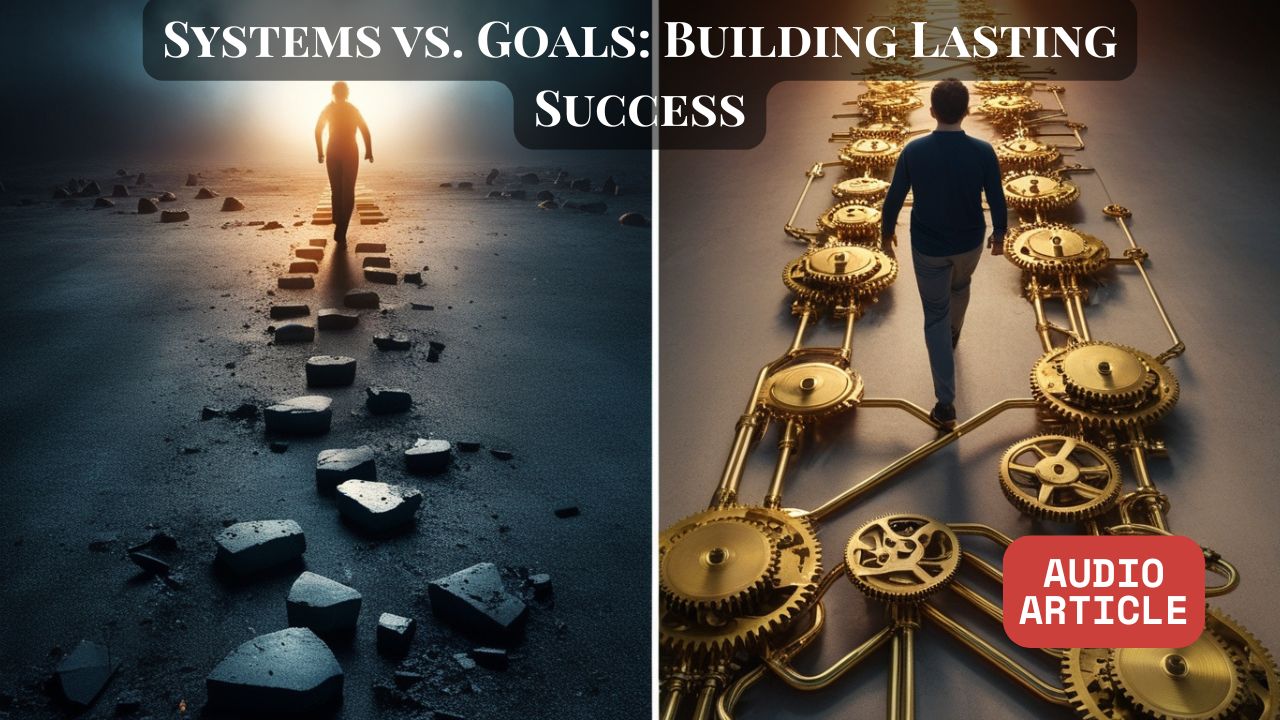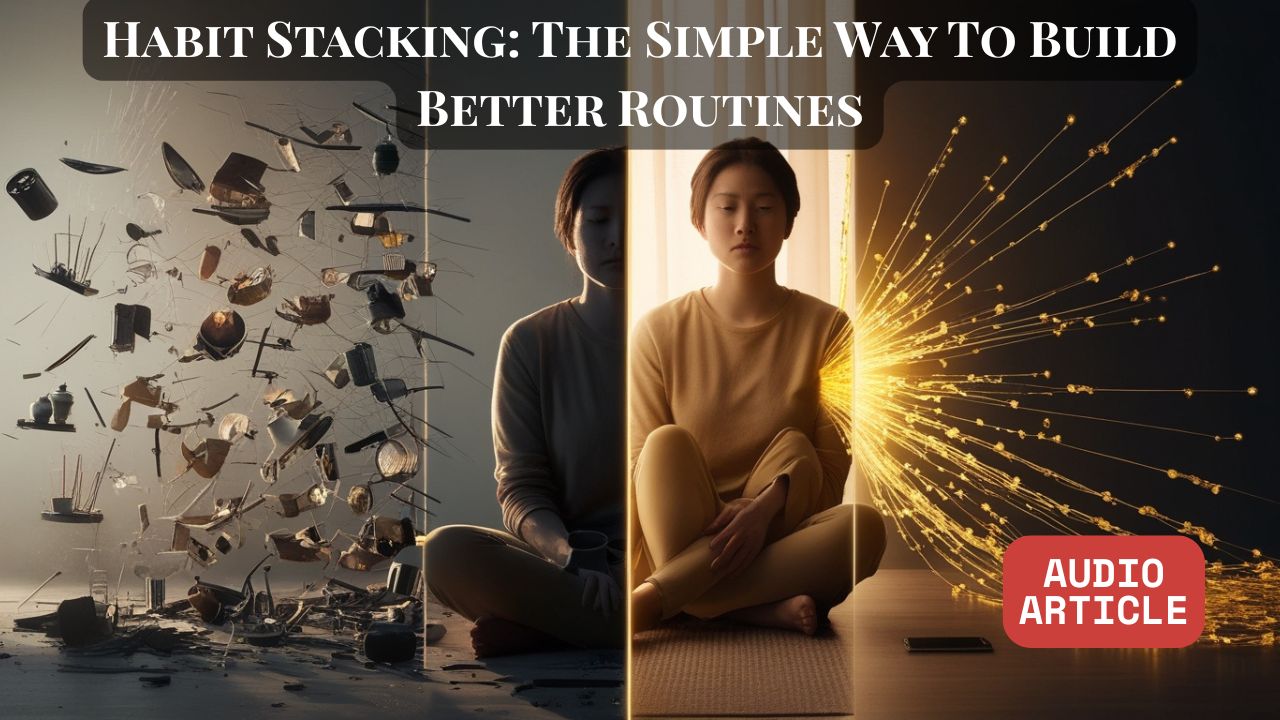The 5 Whys Method for Daily Life
How to dig beneath surface problems to find the real causes you can actually fix
When Jessica's car wouldn't start on Monday morning, making her late for an important client meeting, her first reaction was frustration with the "unreliable piece of junk" she was driving. But as she sat in the tow truck, she decided to dig deeper into what had really happened.
Why did the car not start? The battery was dead.
Why was the battery dead? She had left the interior lights on all weekend.
Why did she leave the lights on? She didn't realize they were still on when she got out of the car Friday night.
Why didn't she realize the lights were on? It was bright outside when she parked, so the interior lights weren't noticeable.
Why was this a problem now but never before? She usually parked in her garage where she would have noticed the lights, but she'd been parking in the driveway because the garage was full of boxes from her recent move.
Suddenly, Jessica's "car problem" became much clearer. The real issue wasn't a bad battery or unreliable car - it was that her post-move organization system was creating unexpected consequences in other areas of her life. She could prevent this problem from happening again not by buying a new car or battery, but by clearing out her garage so she could park inside.
This is the power of the 5 Whys method - a simple but systematic way to trace problems back to their root causes so you can fix them where they actually start, not just where they show up.
Why Surface Solutions Don't Stick
Most people approach problems by fixing the most obvious symptom:
Car won't start → Buy a new battery or car Always running late → Leave earlier or drive faster
Messy house → Clean more often or hire help Work stress → Take vacation or find relaxation techniques Relationship conflict → Avoid difficult topics or go to counseling
These solutions might work temporarily, but they don't address why the problem happened in the first place. Without understanding root causes, you end up playing an endless game of problem whack-a-mole - fixing the same issues over and over again.
The 5 Whys method helps you dig beneath the surface to find leverage points where you can prevent problems instead of just treating symptoms.
The Method: Simple but Powerful
The 5 Whys method is deceptively simple:
- Start with the problem you want to solve
- Ask "Why?" to identify what caused it
- Ask "Why?" again about that cause
- Keep asking "Why?" until you reach a root cause you can actually address
- Usually takes about 5 "whys" to get to actionable root causes (hence the name)
The Key Rules:
- Focus on causes, not blame
- Look for systemic issues, not individual failures
- Stop when you reach something you can actually change
- Be willing to discover that the real problem is different from what you thought
Jessica's Complete 5 Whys Analysis
Let's see Jessica's full investigation:
Problem Statement: I was late for an important client meeting.
Why #1: Why were you late for the meeting? Answer: My car wouldn't start, so I had to wait for a tow truck and get a ride.
Why #2: Why wouldn't your car start?
Answer: The battery was completely dead.
Why #3: Why was the battery dead? Answer: I left the interior lights on from Friday night until Monday morning.
Why #4: Why did you leave the lights on? Answer: I didn't notice they were still on when I got out of the car because it was bright outside.
Why #5: Why was this a problem now when it's never happened before? Answer: I usually park in my garage where I would have noticed the lights, but I've been parking in the driveway because my garage is full of unpacked moving boxes.
The Root Cause: Disorganized post-move living situation creating unexpected consequences.
The Real Solution: Clear out the garage so I can park inside, which will prevent this type of problem and also help me finish settling into my new home.
The Chronic Lateness Investigation
Let's apply the 5 Whys to another common problem:
Problem Statement: I'm always running late to things.
Why #1: Why are you running late? Answer: I underestimate how long it takes to get ready and travel places.
Why #2: Why do you underestimate travel time? Answer: I plan based on ideal conditions rather than realistic conditions.
Why #3: Why do you plan for ideal rather than realistic conditions? Answer: I feel anxious about having "wasted" time if I arrive early.
Why #4: Why does arriving early feel like wasted time? Answer: I don't have good ways to use small amounts of time productively.
Why #5: Why don't you have ways to use small amounts of time? Answer: I never planned for having extra time because I've always been rushing.
The Root Cause: Lack of systems for using small amounts of time productively, leading to anxiety about being early, causing poor planning.
The Real Solution: Develop a "waiting time toolkit" (book, podcast queue, small tasks list) so that arriving early feels useful rather than wasteful.
The Family Dinner Disaster Analysis
Here's how the 5 Whys revealed an unexpected root cause for family dinner conflicts:
Problem Statement: Family dinners always end in arguments and stress.
Why #1: Why do family dinners end in arguments? Answer: Everyone is cranky and impatient by dinnertime.
Why #2: Why is everyone cranky by dinnertime? Answer: The kids are hungry and tired, and the parents are stressed from their day.
Why #3: Why are the kids hungry if it's dinnertime? Answer: Dinner happens at 6:30, but they get hungry around 5:00 and eat snacks.
Why #4: Why do they eat snacks instead of waiting for dinner? Answer: 6:30 is when the parents are available to cook, but it's too late for the kids' natural hunger patterns.
Why #5: Why is 6:30 when parents are available to cook? Answer: Both parents work until 6:00 and need time to commute home and decompress.
The Root Cause: Misalignment between adult work schedules and children's natural hunger/energy patterns.
The Real Solution: Prep dinner in advance or change the family schedule so dinner can happen at 5:30, or provide substantial healthy snacks at 5:00 that complement rather than compete with dinner.
The Money Stress Investigation
Problem Statement: I'm always stressed about money despite having a decent income.
Why #1: Why are you stressed about money? Answer: I never seem to have enough for both my needs and wants.
Why #2: Why don't you have enough for needs and wants? Answer: I spend impulsively on wants early in the month, then struggle to cover needs later.
Why #3: Why do you spend impulsively early in the month? Answer: I feel deprived from being careful with money, so when I get paid, I "reward" myself.
Why #4: Why do you feel deprived when being careful with money? Answer: My budget is so focused on cutting expenses that it doesn't include any guilt-free spending money.
Why #5: Why doesn't your budget include guilt-free spending money? Answer: I believe that spending money on anything non-essential is irresponsible.
The Root Cause: All-or-nothing mental model about money that creates a deprivation/splurge cycle.
The Real Solution: Build guilt-free spending money into the budget so that being responsible with money doesn't feel like punishment.
The Work Overwhelm Deep Dive
Problem Statement: I feel constantly overwhelmed at work.
Why #1: Why do you feel overwhelmed at work? Answer: I have more tasks than I can reasonably complete in a day.
Why #2: Why do you have more tasks than you can complete? Answer: I say yes to every request that comes my way.
Why #3: Why do you say yes to every request? Answer: I'm afraid that saying no will make me look unhelpful or lazy.
Why #4: Why are you afraid of looking unhelpful? Answer: I believe my job security depends on being seen as indispensable.
Why #5: Why do you believe your job security depends on being indispensable? Answer: I've never learned to demonstrate value through quality and results rather than just availability and effort.
The Root Cause: Insecurity about professional value leading to volume-based rather than impact-based work approach.
The Real Solution: Develop skills for demonstrating professional value through results and strategic thinking, which will create confidence to set appropriate boundaries.
When the 5 Whys Reveals Uncomfortable Truths
Sometimes the 5 Whys method uncovers root causes that are uncomfortable to acknowledge:
The Relationship Conflict Example
Problem Statement: My partner and I keep having the same argument about household responsibilities.
Why #1: Why do you keep having the same argument? Answer: We can't agree on how to divide chores fairly.
Why #2: Why can't you agree on fair division? Answer: We have different standards for cleanliness and different amounts of available time.
Why #3: Why do you have different amounts of available time? Answer: My partner works longer hours and has a longer commute.
Why #4: Why is this creating conflict if it's a legitimate difference? Answer: I feel like I'm doing more than my share, but I also feel guilty asking for help when my partner is working so hard.
Why #5: Why do you feel guilty asking for help with shared responsibilities? Answer: I was raised to believe that managing the household is primarily "my job" regardless of other circumstances.
The Uncomfortable Root Cause: Inherited gender role assumptions that don't fit current reality.
The Real Solution: Examine and update beliefs about household responsibility distribution based on current circumstances rather than inherited assumptions.
The 5 Whys Pitfalls and How to Avoid Them
Pitfall #1: Stopping Too Soon
What it looks like: Accepting the first or second "why" as the root cause. Example: Car won't start → Battery is dead → "I need a new battery." How to avoid: Keep asking why until you reach something systemic that you can change.
Pitfall #2: Blaming People Instead of Systems
What it looks like: Ending with "because someone is lazy/forgetful/irresponsible." Example: "Why is the house messy?" → "Because my family doesn't clean up after themselves." How to avoid: Ask why the system makes it easy for people to act that way.
Pitfall #3: Accepting "That's Just How Things Are"
What it looks like: Stopping when you reach something that seems unchangeable. Example: "Why are you always late?" → "Because traffic is unpredictable." How to avoid: Ask why you can't work with or around that constraint.
Pitfall #4: Making It Too Complicated
What it looks like: Creating elaborate causal chains that lead to complex solutions. Example: Finding 15 different interconnected causes for a simple problem. How to avoid: Look for the simplest root cause that explains the most symptoms.
The 5 Whys for Positive Patterns
The method also works for understanding why good things happen so you can create more of them:
Success Pattern: I had an amazingly productive day yesterday.
Why #1: Why was yesterday so productive? Answer: I got into a focused flow state and stayed there for hours.
Why #2: Why was I able to get into flow state? Answer: I had three hours of uninterrupted time to work on one project.
Why #3: Why did I have uninterrupted time? Answer: I turned off notifications and worked from a quiet coffee shop instead of the office.
Why #4: Why did working from the coffee shop help? Answer: The change of environment signaled to my brain that this was focused work time.
Why #5: Why was this different from my usual routine? Answer: I planned the work session in advance and prepared my environment intentionally.
The Success Root Cause: Intentional environment design for focused work.
The Replication Strategy: Schedule regular "focus sessions" with intentional environment changes and notification blocking.
Your 5 Whys Practice
Here's how to apply this method to your own challenges:
Week 1: Pick Your Problem
Choose a recurring issue that bothers you but doesn't seem to have an obvious solution. Good candidates:
- Problems that keep coming back despite your efforts to fix them
- Situations where you keep making the same mistakes
- Areas where you feel stuck or frustrated
Week 2: Do Your First 5 Whys Analysis
Work through the five why questions slowly and honestly. Don't rush to solutions - focus on understanding the real cause.
Week 3: Test Your Root Cause Theory
Try addressing the root cause you discovered and see if it prevents the surface problem from recurring.
Week 4: Refine Your Analysis
If your root cause intervention didn't work, go back and dig deeper. Sometimes it takes multiple attempts to find the real leverage point.
The 5 Whys Mindset Shift
Regular use of the 5 Whys method changes how you think about problems:
From: "This keeps happening to me" To: "This pattern makes sense given the underlying system"
From: "I need to try harder" To: "I need to change the conditions that create this problem"
From: "Why am I so [lazy/forgetful/disorganized]?" To: "What system would make the desired behavior easier?"
From: "This is just how things are" To: "This is how things are currently designed, and design can be changed"
The Root Cause Detective
Once you start using the 5 Whys regularly, you become a different kind of problem solver. Instead of accepting surface explanations, you automatically dig deeper. Instead of treating symptoms, you look for leverage points.
You stop being surprised by recurring problems because you understand the systems that create them. You stop feeling powerless because you can see where you actually have influence.
Most importantly, you stop wasting energy on solutions that don't address root causes and start investing energy in changes that prevent problems from happening in the first place.
The 5 Whys Superpower
The ultimate superpower of the 5 Whys method is that it transforms you from someone who reacts to problems to someone who solves the systems that create problems.
You become the person others come to when they're stuck because you ask the questions that reveal the real issues underneath surface symptoms.
You develop confidence in your ability to understand and influence complex situations because you have a reliable method for getting to the heart of any challenge.
The Deep Understanding Advantage
In a world where most people settle for surface explanations, the ability to quickly identify root causes becomes a significant advantage.
You make better decisions because you understand what's really driving situations.
You solve problems more efficiently because you address causes rather than symptoms.
You build better systems because you can see what creates the problems you want to prevent.
Most importantly, you develop the deep understanding that comes from knowing not just what happens, but why it happens - and what you can do about it.
Welcome to the world of root cause thinking, where five simple questions can transform your understanding of any problem and your power to solve it.
In our next article, we'll explore Root Cause Analysis You Can Actually Use - a more comprehensive framework for understanding complex problems with multiple contributing factors.









